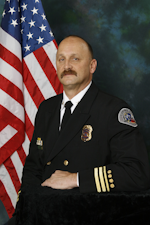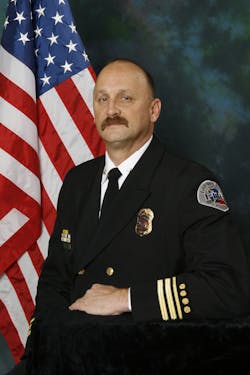You arrive on the scene of a structure fire with smoke showing. The crew begins pulling and charging attack lines. You grab the thermal imager (TI) and do a quick 360 of the structure. You know the drill. The question: Do you know what is “normal”?
I’m referring to the “normal” thermal image of the structure. It is not a simple answer because every structure will demonstrate at least four different, but totally normal, images on a TI. Based on whether you are using your imager during the day versus the night or during the winter months versus the summer months, the images will look different depending on the environmental conditions. For example, a mobile home will look different than a masonry structure. Stick-frame-sided homes will look different than steel structures.
Windows impact information based on single-, double-, or triple-pane designs. Window treatments, if covering the window, can impact image information. Older and poorly designed windows and doors can exhibit thermal images that could easily mislead the user regarding the real heat value of the structure without a normal image baseline. With home additions and renovations, it is possible that you could see multiple types of windows on the same structure.
Preplanning matters
Preplanning is part of most fire departments’ standard operating procedures (SOPs). As such, we all must make an effort to learn about the structures in our fire districts so we are prepared. As part of the pre-planning process, building a picture of what normal should look like can increase the value of your efforts. Without the knowledge of what normal should be, it is possible that firefighters could make a poor decision for entry, ventilation, search and more.
Most of us believe we have a good working knowledge of what we would see when looking at a structure through the eyes of a TI. Surprisingly, that is simply not true. Unless you have made a concerted effort to build your TI background, many firefighters will make wrong assumptions. At night a lighted window is very obvious to the naked eye; however, light will have no impact on the imager’s view. Therefore, we are creating false mental expectations.
Let’s say you receive a call on a hot summer day. Depending on the type of construction used on the structure, the heat of the day can impact the structure in ways that will give the impression that fire could be the issue when it is simply heat retention of the material. Concrete and masonry-type construction retains heat for hours after the sunsets. Western and southern exposures of a building can imitate fire when, in fact, they are demonstrating the effects of more direct sunlight.
Heated glass is even more challenging when you discover the many different glass designs available in structures along with window treatments, such as curtains and blinds. Reflections of some materials only add additional challenges with heat that can be coming from a completely different source. Take into consideration all the environmental conditions that may influence a structure. Heavy vegetation and shade created by trees or even other structures can impact the image.
In addition, you will be challenged by the endless examples of renovated structures. The older the structure, the greater the chances are to find hidden surprises, like room additions with new roof extensions, structures inside of structures, siding over block, or log homes. If you can dream it, it is possible.
To eliminate or minimize potential misleading thermal imaging feedback, departments should make time to use TIs in 360-degree scene size-up trainings on normal non-fire events. By taking the time to become familiar with your fire district during different times of the day and in different seasons of the year, you will see dramatic changes in images of the same structures. This will help build memory banks of structures in their normal state as a great reference background when the real call comes in.
In sum
Interpreting images on your TI is one of the most critical skills a firefighter can perfect. Experience is the greatest teacher. Regrettably, we often learn after something happens rather than before. I vote for looking at some “normal” buildings today so when the call comes in, you can act quickly when interpreting the images on the display.
Note: Let me say thank you to the Firehouse staff for allowing me to write this column. We have benefitted greatly from the practical knowledge and wisdom that John Hays shared with us during the last year, and my goal is to ensure that this column continues to provide you with additional insight related to TI technology.

Carl Nix
Carl Nix is a 30-year veteran of the fire service. He is currently the battalion chief of the Grapevine, TX, Fire Department, an adjunct instructor for North Central Texas College and a Thermal Imaging instructor for Bullard. Nix holds a bachelor’s degree in fire administration and serves as a guest instructor for Texas A&M Engineering Extension Service’s (TEEX) annual fire training in Texas. He can be reached at [email protected].






